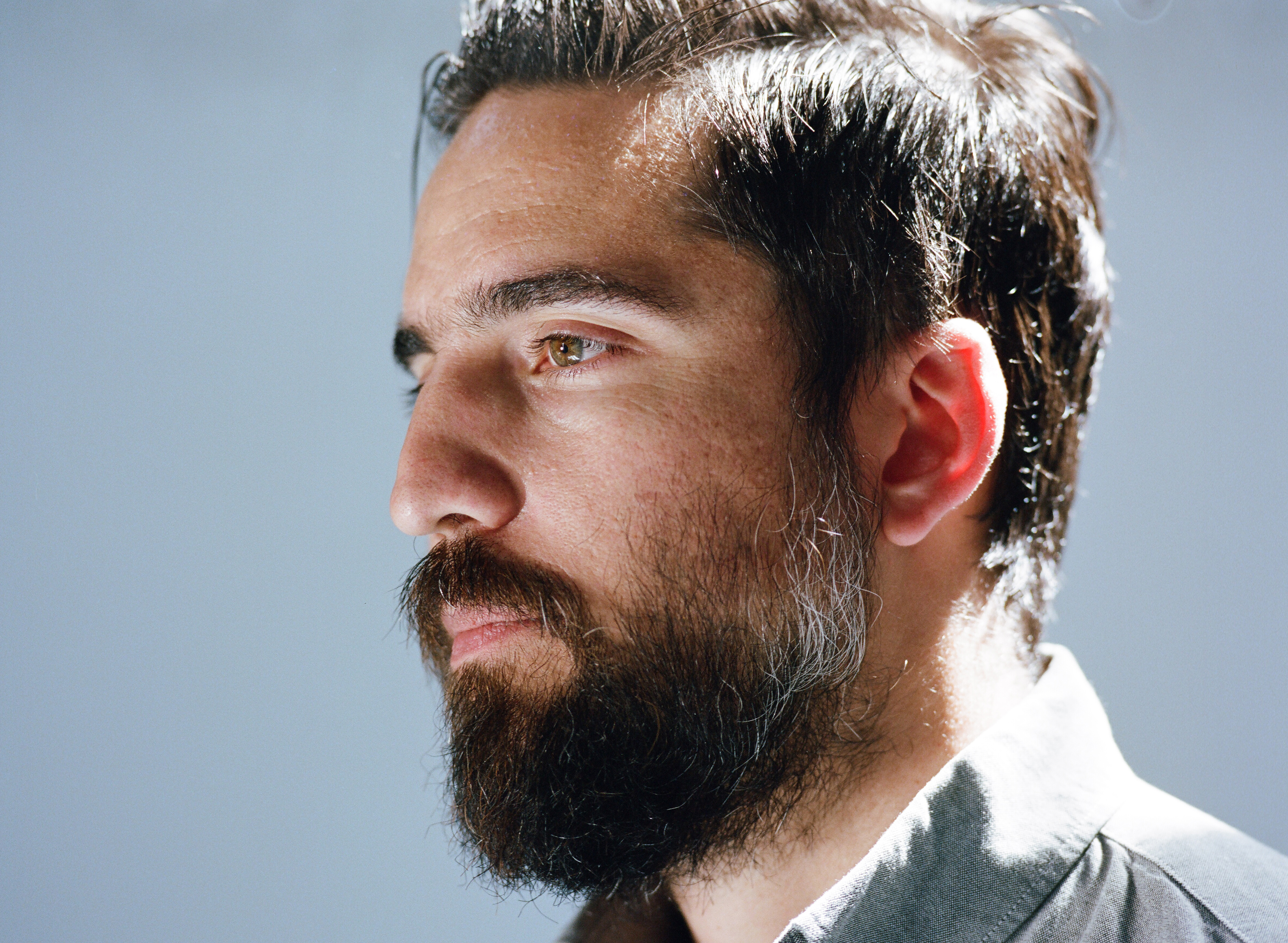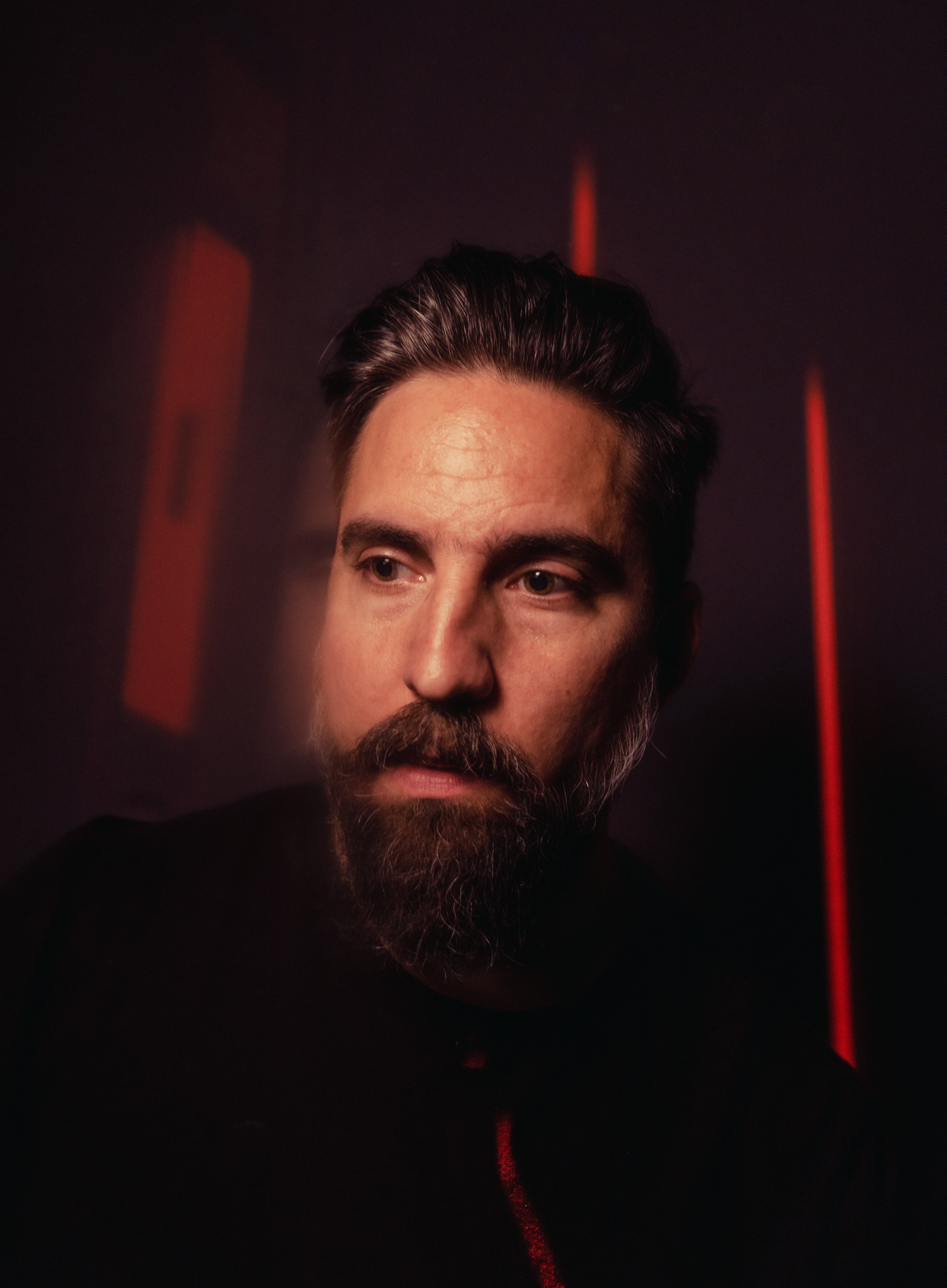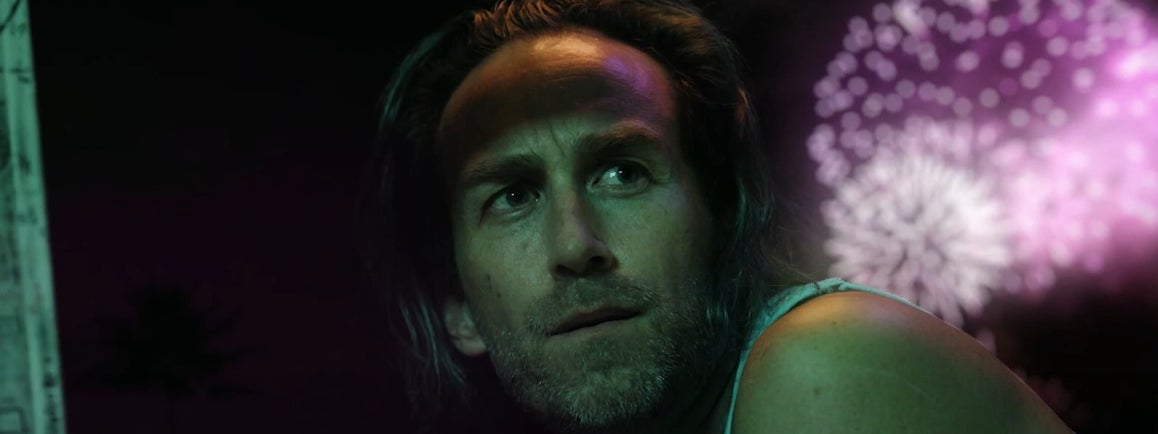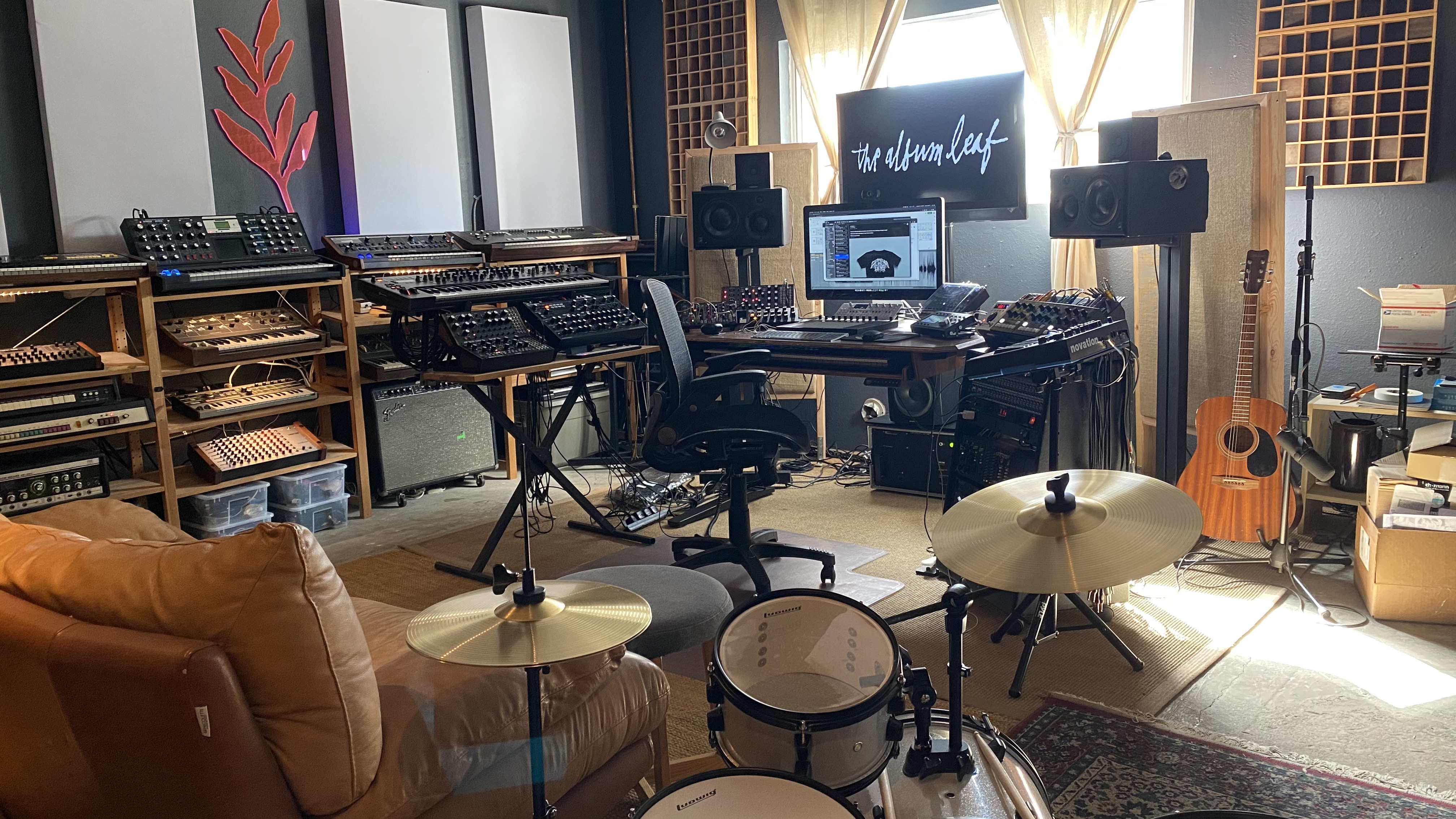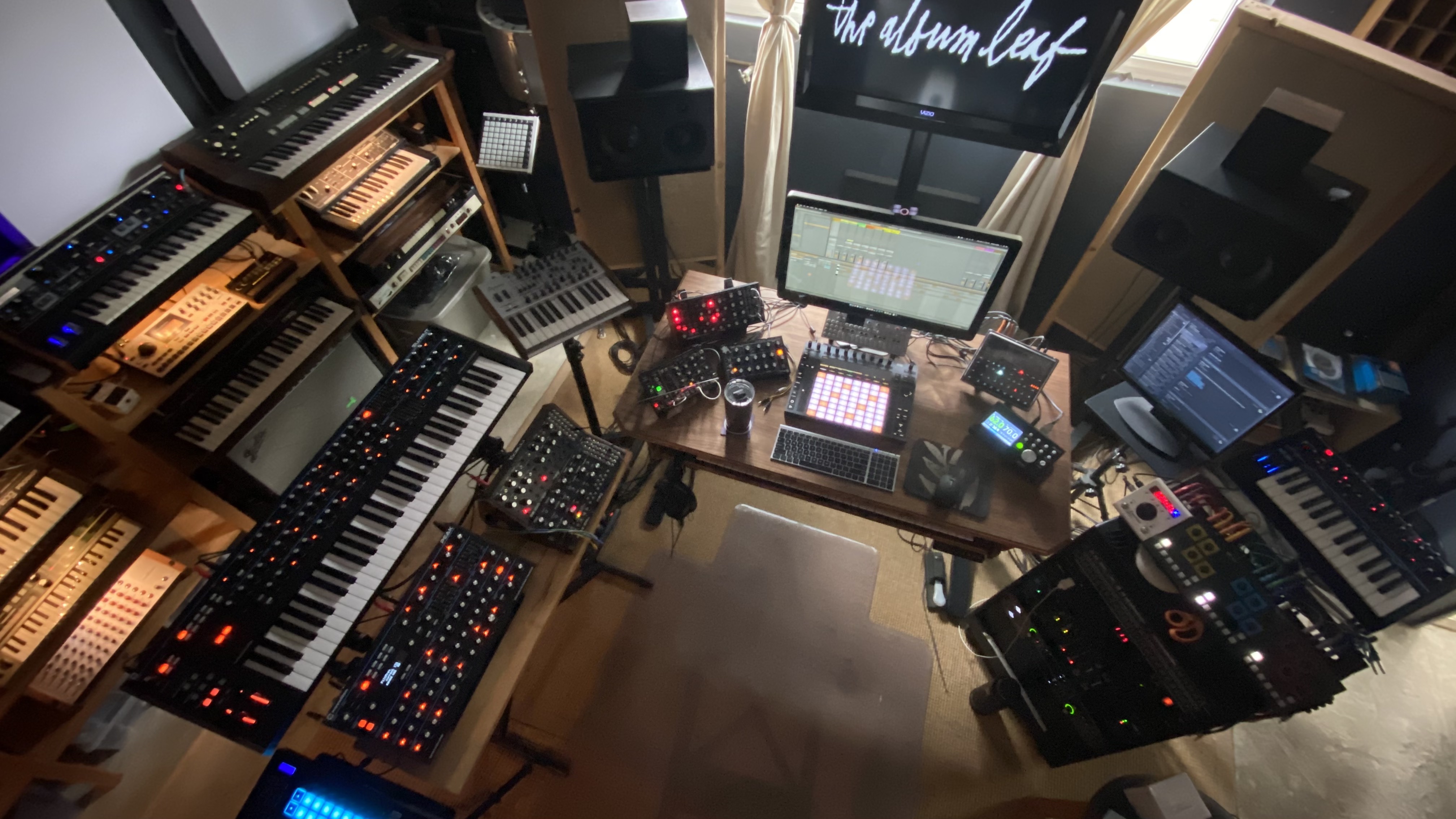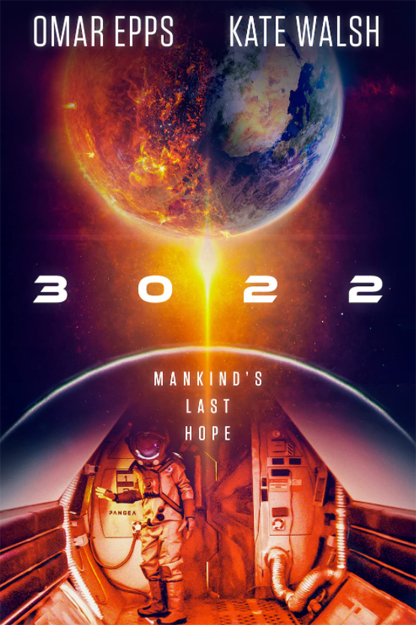February 3, 2022
Composer Jimmy LaValle: SOMETHING IN THE DIRT – Science Fiction Suspense
Interview by Randall D. Larson
Composer Jimmy LaValle (THE ENDLESS, SYNCHRONIC) is a composer who uses synthesizers and effects to create a nuanced palette of textures and dense, evocative atmospheres. His music defies easy categorization, with a style that creates soothing melodies, highlighted by jolts of unexpected dissonance. While drawing inspiration from minimalist composers and sound manipulators like Max Richter and Cliff Martinez, LaValle has developed his own unique method of decorating a film’s sonic space. “I compose music to compliment the tone of a film,” LaValle says. “The focus is on constructing a mood, using silence as another instrument. I like a dark, melancholic, uplifting quality, which is not as contradictory as it sounds. I find an exclusive aural approach for each film to help it create its own environment, its own world – a cohesive structure that aligns with the director’s vision.”
An established composer also known for his solo work with his band The Album Leaf, LaValle scored his fourth collaboration with directors Justin Benson & Aaron Moorhead in their new, mysterious sci-fi/horror feature SOMETHING IN THE DIRT. In the film, two neighbors, John and Levi (played by the directors), witness supernatural events in their Los Angeles apartment building, and realize documenting the paranormal could inject some fame and fortune into their wasted lives. An ever-deeper, darker rabbit hole, their friendship frays as they uncover the dangers of the phenomena, the city and each other.
Jimmy was brought in early in the filmmaking process, writing initial pieces of score after reading the script, including a synth motif that remained the main focus in the film. He described this motif as having an “addictive” feeling to it – the sound is always moving and compulsive. He also chose specific instrumentations to represent both characters’ personalities – a bass clarinet for John and a flute for Levi.
SOMETHING IN THE DIRT premiered in Sundance’s NEXT category on January 23rd. There is no word yet on a release date or a soundtrack album.
Listen to the track “Is That Morse Code?” from SOMETHING IN THE DIRT:
Q: What led you into film scoring and how did you establish yourself in the early days, scoring for documentaries and short films?
Jimmy LaValle: Leading into it was about a decade of really good luck of having my listing music, under my project named The Album Leaf, being licensed for TV – some film, but mostly television. Throughout that time period I started to get approached more by young filmmakers, indie filmmakers, documentary filmmakers, what have you, reaching out and asking for approval to use one of my songs as a cue in their film. I had a lot of those things happening, and at one point while I was on tour, I got ahold of one documentary, watched it, and I was really drawn to it. Because they were using a lot of my music, I offered to score the film – and that was my first foray into scoring. My wife is also a documentary filmmaker and, around the same time I was starting to dive into it, she was in grad school and had her own network of documentary filmmakers, and she would bring me to their attention. So I started out with a handful of documentary films out of that. As far as the story of Justin and Aaron, Justin filmed me making a record back in 2005 and when I moved to L.A. he reached out after having already made RESOLUTION [2012] with SPRING [2014], and that’s how I started into the narrative side of films. From then on, I feel like I’ve had some streaks of success with people coming to me for what I do and the sound that I create. I’ve been very thankful.
Q: What can you tell me, briefly, about your scores for Justin Benson & Aaron Moorhead, with THE ENDLESS, SPRING, and SYNCHRONIC –how did you approach scoring these unique sci-fi, fantasy, or horror projects?
Jimmy LaValle: With SPRING I was new. Scoring can be both a good and a bad thing when you’re new, I think; there’s a lot of things you don’t really understand, but also it works to your benefit. I had a lot of montage sequences that gave me moments of score that were like my moment to shine. Back then I would go a little bit more towards the temp, trying to do something in my own voice that resembled the feel and the vibe and the mood of the temp. And then the really fun stuff was getting into the grind of horror, if you will – that side of scoring, which I really appreciate and I’m excited by that. With THE ENDLESS, I started to play more with themes and started to enlist other players, reaching out, knowing what I wanted… I wanted to do a lot of really grimy, archaic monster sounds for the monster of that film, and reached out to a person who was drumming for me at the time – who was a modular synth designer – and he sent me about thirty minutes or so of him messing around on his synths, which I then took and audio-manipulated them and was able to use those as ways to start out. So with that project I fell more into themes and I fell more into cutting to picture and certain things like that.
And with SYNCHRONIC I feel like I really found my voice and found my way with them. I felt confident about creating my own world and a creating score that would support and enhance the movie, as opposed to just being with the movie.
Q: What kind of musical palette do you prefer to use in film scores?
Jimmy LaValle: My first go-to is always synth. In my studio, I have three synthesizers that I work on pretty relentlessly and endlessly, and with the click of a button I have a single empty patch – it’s just an oscillator and I start from there and start to design my sounds from then on out. And moving on from the synth, piano always makes its way in, although I try to use it as little as possible. I like to use strings and I like to use horns. I try to give each film its own signature atmosphere with drones and tones and space. I spend a lot of time finding and creating and trying to add to what we’re seeing on the screen.
Q: With your latest work for them, SOMETHING IN THE DIRT, what was your starting point on this film as far as what it needed, musically?
Jimmy LaValle: This film went through a handful of different ideas to ultimately just come back to what I had initially written on my first reaction from the script. I’d gotten the script around September 2020. I think Justin and Aaron had shot it but they didn’t start the edit yet; they were in Europe doing MOON KNIGHT and I didn’t get a cut until July 2021. But they had sent me the script. I read it, sat on it for a month or so, and then while I was in the middle of something else, I came up with my initial ideas of what I wanted to do. My first inclination was to do an ode to Hollywood noir and film noir, but I was reading from the script – and this happens every time I get one of their scripts – I have a visual in my head and of course it’s vastly different from what they were doing! But as I read the script I found that it’s not like a detective film where they’re wearing top hats and trench coats and smoking cigars and things like that, but I did feel that there was a sense of investigation and trying to uncover things and solve this mystery by searching through geocaching and all of the different things that they were discovering and pooling together in the ratholes they were going down. Initially, I wanted to do a vocal-only score but then one day I turned on my synth and I just started to make this patch, and I realized that the eeriness and the sound of it resonated with the push and pull of John and Levi, the kind of addiction they have to always coming back to work on this mystery. I sent that to them, probably around February of 2021 and they loved it immediately.
It needed polish, of course. I did a lot of tonal undertones for the themes, for the ashtray that floats and other things that happen, and I did some synth design for that, but basically once I got the first cut in July, they had a Philip Glass cue from an Errol Morris film throughout all of their theorizing moments. It was obviously a repeated thing with a recurring theme and the tone and the feel of it was very different from what I created on the synth, and so that stuck with me for a long time. Then I ultimately just came back to that original idea, placed it in, and was able to dissect it, go different directions with it, and from there it was fine-tuning with other musical directions and sitting in the room with Justin and Aaron which really brought it all together.
Q: Your main synth theme has been described as “moving and compulsive, like pushing together two magnets on the same side.” How did you come up with this musical treatment and how have you used it in the film to augment the supernatural events the characters confront?
Jimmy LaValle: The original synth tone that I created was something that did support the narrative of the push-and-pull between the two characters, and there’s one synth note that is always moving steadily away from each of them, circling around and wiggling in such a way that it resembles the competitive nature between the two characters as well, trying to outdo each other and just always pushing and pulling from one another. Then, when it comes to the supernatural, we came up with the idea of scoring each object, or having a sound for the objects, which created on my synth [plays slow rolling, groaning/rumbling sound on synth] and I was able to take that sound further and manipulate it, give it space, and give it different voicings. When we would see those things on the screen, I would accent those to draw attention to the idea that these are objects that we’re seeing and they mean something. It’s not the obvious paranormal things happening within the apartments and the closet, but it’s also the cutaways to these different objects that they’re finding and collecting.
Listen to the track “The Symbol” from SOMETHING IN THE DIRT:
Q: Would you describe your thematic or instrumental elements that you assigned to each character, John and Levi, and how these motifs were developed as the film progressed?
Jimmy LaValle: The character of John, when we meet him, seems harmless enough. He seems like a bit of a trickster, but also he’s very helpful. But as the story moves along, you question what he’s up to – there’s a sinister vibe to him and you feel that you can’t fully trust him and he may be stretching the truth. Also, as the film gets unveiled as we see that they’re recreating something that the had started, John’s character develops a bit – I also wanted to support his church background. He alludes to it a lot in the film but you never really see him be involved in it, it’s just a lot of talk. We landed on a church organ that we used a bit for that; it’s subtle, but it is there with a melody that’s definitely got a sinister vibe to it. You don’t know if you can trust him, and throughout the film I’ve added some strings and that gets a little more supportive and moves along with him throughout the storyline.
As far as Levi is concerned, his through line was always just the fact that he’s a character who’s always on the move. He’s passing through, he’s really optimistic, he really wants to find some place and settle and be happy and stop moving. There’s an optimism to him and a whimsical outlook that he has on life and where he wants to be. This is the first film that I worked with a woodwind player; she did bass clarinet, clarinet, and flute, and when I got the flute stems that she did, she’d done the things that I was basically looking for. I always ask the players that I work with to always embellish and improvise and add whatever they hear, and she had a lot of these improvised runs over the cues that she tracked on, and when I got those, Justin and Aaron were in the room with me and we just thought immediately “this is great for Levi!” It shows his optimism and support his outlook on life. The undertone, the bed [of Levi’s music] can change throughout the film but the flute is always there to just accentuate and remind you that Levi’s hoping for bigger and better things for himself.
Q: Did the fact that there were only two characters in the film, played by each of the directors, affect your musical approach to the story?
Jimmy LaValle: I don’t think so. While there are only two characters on screen, there are different narratives that are happening on different story lines and we keep coming back to those things. There’s probably six or seven different “character” narratives that were scored, so I think because of that, and because of the limitations of the characters on the screen, we were able to find the other elements. The documentary side and the interviews in the narrative have their own moments and also their own theme. Then I was talking about the objects earlier, there’s also the prism itself, the light source, they are also associated with theorizing themes but they also have their own individual themes, which allowed me to be a little more on-the-nose, if that makes sense at all. In previous films I scored more to what was happening in the story as opposed to the traditional sense where if you see a character, you hear their theme or you hear their palette.
Q: How did you augment the science fiction and horror elements of this film, musically?
Jimmy LaValle: Those moments happen and they’re really fun to score. In the way I described earlier with the flautist, the violinist gave me a lot of cool material, including an improv of an earlier cue that I was able to shift around and use to give it a more traditional horror stinger push. The bass clarinet also came into play, with some nice, really full, low tones. This also contributes to the overall sense of eeriness and haunting when we needed it. The whole score in general has only one happy moment, in terms of melody or in chord structure, which is when you’re seeing the two of them connect. Early on when Levi’s sitting on his balcony having a cigarette and he’s having a chat with John, catching up and telling each other about life, there’s this really sweet moment between the two characters, and I think that’s the only time the score is at all inline with being anything optimistic or happy! Otherwise it’s more of an overall haunting, atmospheric, and darker score.
Q: How many live players did you have in total; and what was your technique as far as integrating live with the electronic and synths patterns that you’re using?
Jimmy LaValle: With each of my scores I typically have two-to-three individual live players. On this one, even before COVID I was working remotely with players… there’s a cellist that I work with who’s in New York, he does a lot of additional embellishing to my cues and adding his low voice to things; and there are some people in L.A. that I’ll use. But on this project, I just had the woodwind player and the violinist, as I mentioned. She provided bass clarinet, clarinet, and flute, and I gave her the stems for five cues and she basically doubled everything on the instrument, and then on top of that I asked her to improvise, and with that I was able to spread those cues around. I do that a lot of that, typically, in my scores; with any music I create I’m always flying things around and manipulating audio and editing after the fact. The violinist did his tracking in his studio; he just had the film front-to-back with the score and he went through and did the same thing, hit the moments that I was looking for and then also added a lot of embellishing. Then I also had the big needle-drop moments; those were done by a friend of mine who I work with, who I’ll reach out to for those moments. I can do those myself but I feel like it takes away from the train that I’m on and the headspace that I’m in.
Q: What has been most challenging about scoring this film – and what was most rewarding for you about the project?
Jimmy LaValle: The challenging thing for this film was trying to fit in, because there’s a lot of dialogue, a lot going on. You’ve got to pay attention to all the rabbit holes that they’re going down, so it was pretty challenging to be sparse enough and yet full enough to present the score that I felt was sonically solid, but also keep the space to give them that room for the dialogue and everything that they were talking about. I was also stuck on the temp track for a really long time, which was pretty challenging, but I pulled myself out of that. What was rewarding? I’m just really happy with the end result and with the integration of using winds for the first time. I’m constantly progressing as both a composer and a producer, so my audio manipulating and my sound design and overall production of the score and creativity is always in forward motion; and I’m excited and proud with how it turned out, the tone and the sound, and I think the film is really cool. I’m also proud of the thematic through-line that’s happening, I think it’s recognizable and I like that a lot.
Q: I also wanted to briefly ask you about another film you did a couple of years ago, a science fiction film called 3022, about a group of astronauts living in the haunting emptiness of deep space who awake to find earth has suffered an extinction level event. What can you tell me about scoring that with John Suits, director?
Jimmy LaValle: That was a low budget passion project; John sent it to me and I was really impressed with the look of the film, the production design, and it’s got some notable actors. It was really great working with John. That score was really drone-y and dark and moody, but I did have some moments. On the opening cue I was able to write this great piano piece and then also hit some really cool melodic moments towards the end of the film. I’m really proud of scoring that film; it definitely came and went, but hopefully people can pick it up. For me I found it really cool to score by dropping fifths and turning around each segment, because it goes through the years and I was able to drop down, and I thought that was a cool technique to drop those moments down by fifths and ultimately get to the end.
Thanks to Jimmy LaValle for taking the time to discuss SOMETHING IN THE DIRT with me in detail. Special thank to Andrew Krop and Kyrie Hood of White Bear PR for facilitating this interview.
For more details on the composer, see his website at https://thealbumleaf.com/film-tv/

